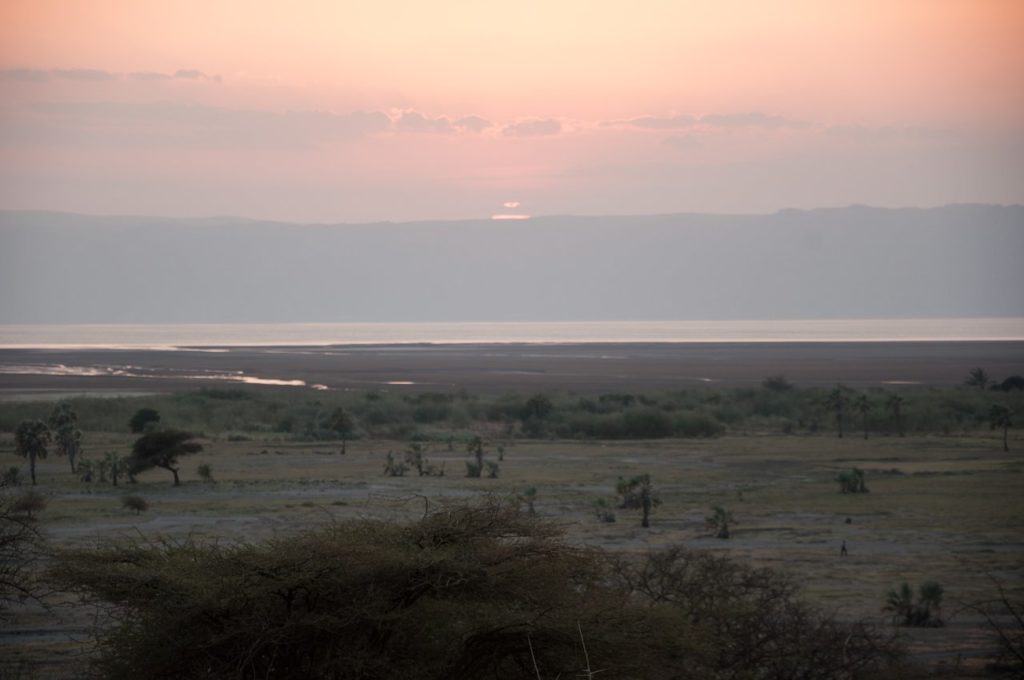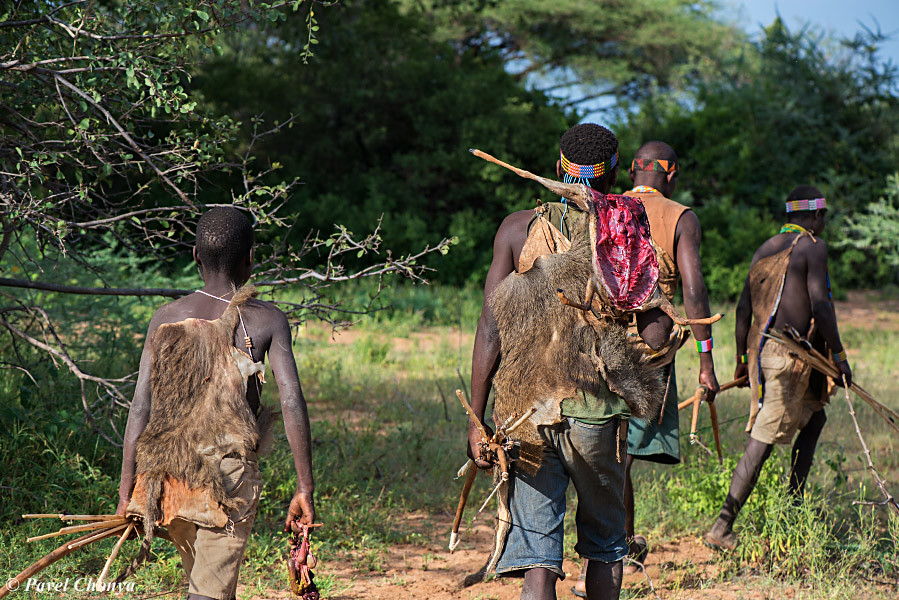The vast Lake Eyasi verges on remote southern border of the Ngorongoro Conservation Area, and lies at thte base of the 800m Eyasi escarpment, part of the western Rift Valley wall.
In years of plentiful rain, this shallow soda lake can extend for 80 km from north to south, but in drier periods it sometimes dries out altogether to form an expansive white crust.

Most of the time, it falls somewhere between the two extremes: an eerily bleak and windswept body of water surrounded by a white muddy crust and tangled dry acacia scrub.
When you visit in the middle of day, the lake had a rather desolate appearance, but you can imagine that it might be very beautiful in the early morning or late afternoon.

There is little resident wildlife in the area, aside from dik-dik and baboons, but depending on the water level, the lake is ana important source of fish for Arusha and it often supports hundreds of thousands of flamingos as well a variety of other water birds
HADZABE TRIBE
The lake Eyasi is primarily of interest to tourists as the home of Hadzabe. The Hadzabe of lake Eyasi hinterland, which lies to the east of Karatu, represent a unique and increasingly fragile link between modern east Africa and the most anciet of the region’s human lifestyles and languages.

Numbering at most 2,000 individuals, the Hadzabe are Tanzania’s only remaining tribe of true hunter-gatherers, and their Hadzabe language is the one of the only two in the country to be classified in the Khoisan family, a group of click-based tongues that also includes the San(Bushmen) of southern Africa.
The Hadzabe live in nomadic family bands, typically numbering about 20 adults and a coterie of children.
Their rudimentary encampments of light grass shelters are erected in the space of couple of hours, and might be used as a base for anything from ten days to one month before the inhabitants move on.
These movements, though often rather whimsical, might be influenced by changes in the weather and local game distribution, and a band will also often relocate close to a fresh kill that is sufficiently large to sustain them for several days.
The Hadzabe are fairly indiscriminate about what meat they eat-anything from mice to giraffe is fair game, Baboons are regarded to be the ultimate delicacy and reptiles are generally avoided.
Hunting with poisoned arrows and honey gathering are generally male, while women and children collects roots, seeds, tubers and fruit – vegetarians fodder actually accounts for about 80% of the food intake.
There a lot of facts about Hadzabe and the way of their living Kaoneka Safaris offers nice packages for you to get experience this tribe.
